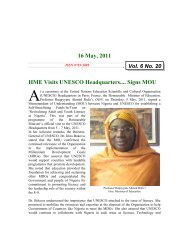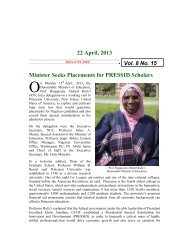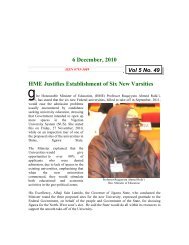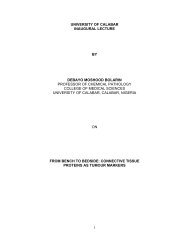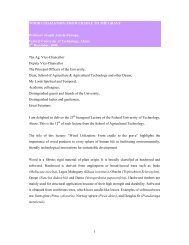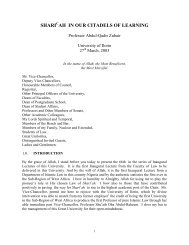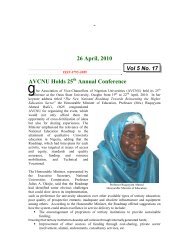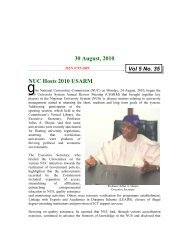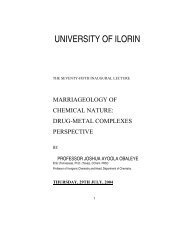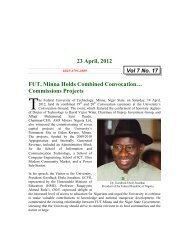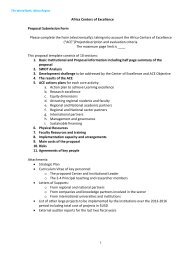THE VARIED ROLES OF SNAILS - National Universities Commission
THE VARIED ROLES OF SNAILS - National Universities Commission
THE VARIED ROLES OF SNAILS - National Universities Commission
Create successful ePaper yourself
Turn your PDF publications into a flip-book with our unique Google optimized e-Paper software.
In the snail the miracidium metamorphoses into a<br />
sporocyst, rediae, daughter rediae and cercariae.<br />
The cercariae emerge from the snail and eneyst<br />
on water cress, grass, barks or soil. When<br />
ingested by a definitive host the metacercariae<br />
exyst in the duodenum. The disease runs an acute<br />
and chronic phases. The chronic phase occurs<br />
when the mature fluke enters the bile duct and<br />
symptoms pertaining to obstruction of the bile<br />
duct or inflammation of the duct occurs.<br />
(c) Fasciolopsiasis (Ginger worms)<br />
This disease is caused by the parasite<br />
Fasciolopsis buski which was earlier called<br />
Distoma buski. The parasite is also known as the<br />
Giant intestinal fluke of man. Its definitive hosts<br />
are man, pig or dog.<br />
The molluscan hosts are of the genus<br />
Segmentina. The eggs are passed in the faeces of<br />
the definitive hosts. These eggs hatch in 3 to 7<br />
weeks in water having a temperature of between<br />
80 and 90 o F to give rise to the ciliated miracidia.<br />
These penetrate the suitable snail hosts and<br />
develp into sporocysts, then into rediae, daughter<br />
rediae (or rediae II) and cercariae. The cercariae<br />
emerge from the snails and get converted into<br />
metacercariae on the outer covering of water<br />
chestnuts.<br />
Human beings get infected by eating<br />
contaminated raw water plants especially when<br />
peeling off the outer layers with their teeth.<br />
81




